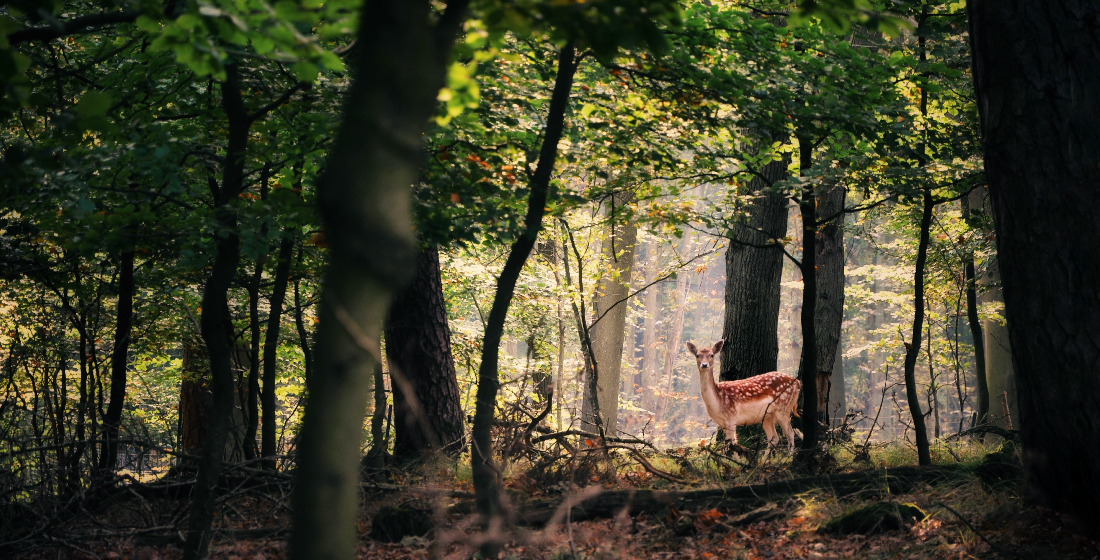The dawning of the conservation finance market
A new report by the Coalition for Private Investment in Conservation reveals that the conservation finance market looks set for take-off in 2021 – but still lacks investable deals for the private sector.

According to the World Economic Forum, approximately half of the world’s GDP depends on nature and its services. That means the fortunes of the global economy and those of the world’s ecosystems are inextricably tied. Of course, redirecting public finance will go a long way toward closing the massive $598-824 billion annual biodiversity financing gap (Deutz et al, 2020), but public finance alone won’t be sufficient to address the growing biodiversity crisis. Private sector finance, which today accounts for just 14% of global conservation investments, must also be mobilised at scale.
Conservation finance is, however, steadily becoming an investment opportunity of institutional proportions, according to the latest research by the Coalition for Private Investment in Conservation, led by South Pole, the Cornell Atkinson Center for Sustainability, and the International Union for Conservation of Nature (IUCN).
Earlier this year, the United Nations Environment Programme estimated the size of the conservation finance market to be around $133 billion. Around 80-86% of that funding derives from the public sector, with the market historically reliant on grant-based public and philanthropic finance. Nonetheless, supported by the American Bird Conservancy and the Global Environment Facility, the new in-depth analysis of 35 leading investors and conservation project developers shows that the volume of return-seeking finance in conservation is projected to grow significantly in 2021.
“The growing interest in conservation finance from for-profit investors inevitably increases the short-term gap between existing investable opportunities and investors requirements. But there are reasons to be optimistic – the conservation market has a unique potential to grow,” says Vincent Gradt, CEO at Mirova Natural Capital. “In order to successfully scale the market, we must focus on the ‘missing middle’ and design strategies that can accelerate the number of investor-ready opportunities.”
The analysis found that investors’ awareness of conservation finance opportunities has progressed substantially in the past five years, contributing to the surge in interest in conservation finance that seeks a return on investment. Seventy percent of surveyed investors are planning substantially higher investments (over 10% higher) in conservation in 2021 compared to 2020.
The pipeline of conservation projects is also growing: survey respondents raised $1,042 billion in investments for projects they developed between 2015 and 2019 (an average of $208 million a year), and $532 million for projects developed in 2020. At the time of disclosure, they were planning to secure $986 million of investments in 2021 – a target which, if met, would represent an 85% increase from the previous year.
Furthermore, 92% of the investments analysed were linked to market-rate, rather than concessionary returns – indicating that conservation deals are becoming increasingly more attractive financially.
“The conservation finance sector still lacks multi-year, in-depth data specifically on private, return-seeking investments in nature. This research collaboration is an effort to fill in that critical data gap,” says Martin Stadelmann, director of climate investments at sustainability consultancy South Pole. “With better insights into the opportunities of the market, return-seeking investors can explore new, innovative instruments and revenue streams to complement the conservation activities that have primarily relied on the limited, grant-based public and philanthropic funding in the past.”
Limited diversity in asset classes and financial flows
The report also revealed that the conservation finance market is dominated by seven investor countries, as well by the use of private equity and debt, and also commodity sales as the primary source of revenues. Those concentrations indicate that current investors aren’t leveraging the full range of available asset classes, and that there is substantial potential to scale conservation efforts when accessing finance from other geographies such as China, Japan, or Latin America.
Indeed 99.7% of reported investments originated from just seven countries – Australia, Germany, the Netherlands, South Korea, Switzerland, United Kingdom, and the US. And 91% of the investment instruments were private debt and equity, as well as real assets, with only 8% using publicly traded instruments. The lack of publicly-traded conservation assets means that the financing costs for conservation are still much higher than for other sectors such as renewable energy. The primary revenue sources for conservation investments were sustainable commodities (55%) and environmental markets, including carbon and biodiversity credits (31%); but relying on commodity markets alone limits the type of conservation projects available for investments.
“The majority of conservation finance investments are currently made through a narrow set of investment vehicles. Raising awareness of the other available conservation assets could drive down the cost of financing conservation,” says John Tobin, professor of practice at Cornell University. “Environmental markets have great potential for scaling investments in biodiversity conservation, but also that they need to develop further if they are to become mature markets for mainstream investors.”
Lack of bankable deals and unsuitable impact measurement
The analysis furthermore found that although investments in nature are increasing, it isn’t happening fast enough to avert the global climate and biodiversity crisis. Small deals, long investment time horizons, high investment risks, low transparency on conservation impact, and – above all – a lack of bankable deals still hinder the scaling up of return-seeking investments in conservation.
Survey respondents cited the lack of investable deals as the most important barrier for investments. There also appears to exist a disconnect between project developers and return-seeking investors: project developers seem unaware of investors’ requirements for internationally recognised standards and competitive returns.
Eighty-five percent of the individual deals were reported to be small (under $5 million), with only 2% of deals above $51 million. And the high costs of quantifying impacts (70%) and lack of standardised measurement metrics (48%) were cited as the key barriers for measuring conservation outcomes. However, the effectiveness of conservation impacts is sector-dependent: respondents estimated that their investments in forestry projects have generated more biodiversity impacts than their investments in sustainable agriculture, oceans, or coastal areas. Overcoming those issues will be fundamental to ensuring that growing financial flows translate into tangible benefits for global ecosystems.
Charlotte Kaiser, managing director of NatureVest at The Nature Conservancy, says: “There are two key pieces to accelerating capital flows that can make a big difference: to better engage with investors, developers can streamline risk factors by market-testing novel concepts and structures with institutional investors. On the other hand, investors who adjust their comfort level with uncertainty are much better equipped to commit to transactions that truly make a difference for conservation, rather than avoiding risks and allowing the untenable status quo to continue.”
New technologies and nature-related disclosure requirements will unlock investment
Finally, the report found that return-seeking corporate funds, and new technologies and disclosure requirements are expected to drive more investments in conservation in the coming years.
Digital innovation is creating better online marketplaces for natural capital and improving conservation impacts measurement through remote sensing and artificial intelligence. Also, nature-related disclosure, driven by initiatives such as the Taskforce on Nature-related Financial Disclosures and the EU Taxonomy, will likely push the private sector to re-evaluate and publicly report on nature-related risks and impacts, and drive investments via public equity and debt. And new, large corporate funds for nature – established by companies like Apple and L’Oréal – are expected to channel significant amounts of supply chain-driven investments into conservation over the coming decade.
Despite these innovations, conservation investments will not scale quickly enough to protect the world’s most vulnerable ecosystems and the global climate. As such, public sector intervention will be required to build bankable project pipelines, help de-risk private investments, and create the right regulatory environment to mobilise private investments into conservation at a scale.
“Within this decade, we need to move from millions to trillions when it comes to financing nature and achieving global climate and biodiversity objectives,” says Elmedina Krilasevic, senior programme coordinator for NBS (nature-based solutions) Finance at IUCN. “The report shows that there is growing interest from policymakers and investors to invest in nature – and that now is the time to power the nature investment revolution.”





